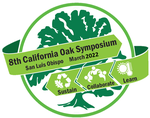#16

Mario Pesendorfer, Institute of Forest Ecology, University of Natural Resources and Life Sciences, Vienna
Walter D. Koenig, Hastings Reservation, University of California Berkeley
Johannes M. H. Knops, Department of Health and Environmental Sciences, Xi’an Jiaotong Liverpool University
William J. Carmen, Carmen Ecological Consulting
Whether climate change will or will not alter patterns of seed production by mast-fruiting species is a topic of considerable current debate. At Hastings Reservation in upper Carmel Valley, central coastal California, daily weather records go back to 1939 and annual acorn surveys have been conducted since 1980, providing 80 years of weather data and 40 years of acorn surveys of five species of oaks (Q. lobata, Q. douglasii, Q. chrysolepis, Q. agrifolia, and Q. kelloggii). Annual conditions are highly variable, particularly for rainfall, which is strongly non-normally distributed. Over the 80-year period, however, mean maximum temperature and rainfall has not changed appreciably; in contrast, mean minimum temperature has increased by ~1.1oC, increasing during all months of the year except for December. Annual variability in temperatures and rainfall as measured by the coefficient of variation using 10-year windows have not changed, however. Thus, although variability has not increased, conditions have warmed significantly as a result of warmer night-time conditions. This change has not had a detectable effect on either the mean or the variability of acorn production by any of the species based on our annual surveys. The relationship between climate change and masting behavior will not be easy to determine empirically, if for no other reason than that even 40 years of data is barely enough to address this critical issue.
